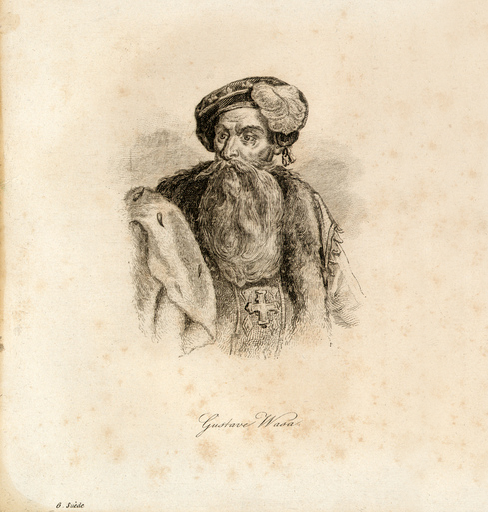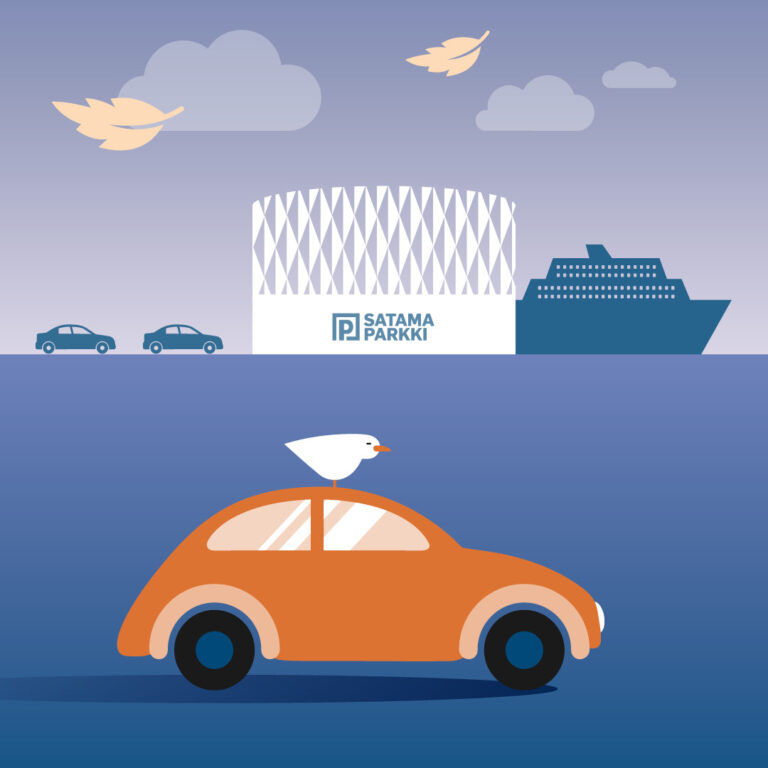
Port history
Helsinki was founded in 1550 at the mouth of the Vantaa River to serve as a trading and port city, as King Gustav Vasa wanted to compete for maritime and military transport operations on the Baltic Sea. The city of Helsinki grew around the port.
Today, the Port of Helsinki is Finland’s main port, with a significant portion of Finland’s foreign trade traffic passing through it. Helsinki also has a strong and distinctive marine atmosphere. Passenger ferries to Sweden and Estonia, cruise ships and terminals, recreational boats, harbours filled with life and the Havis Amanda statue looking out to the sea from the Market Square are an inseparable part of the landscape of our capital city.
The global COVID-19 pandemic brought about extensive restrictions to travel. The number of passengers passing through the Port of Helsinki plummeted as well. It was not until 2022 that the pandemic let up and ship travel could start properly recovering.
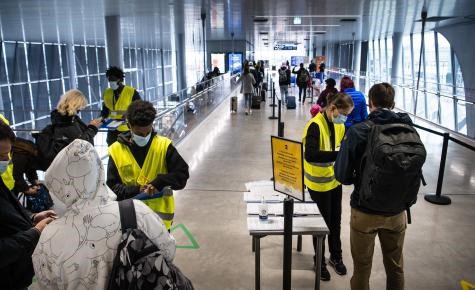
West Terminal 2 was opened at West Harbour in February 2017. The new terminal, featuring a breathtaking view of the sea, offers a whole new level of travel comfort and convenience, serving fast liner traffic between Helsinki and Tallinn. The planning of the passenger terminal took passenger comfort, the needs of ship traffic and various environmental aspects into account as much as possible.
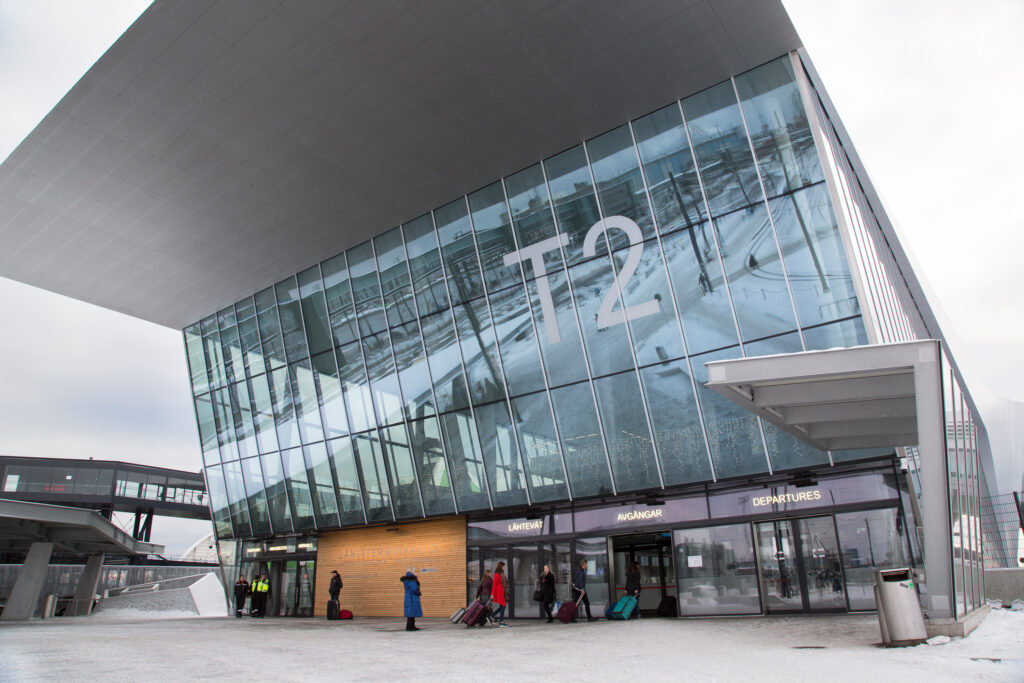
The Port of Helsinki became a limited liability company on 1 January 2015 and was named Port of Helsinki Ltd.
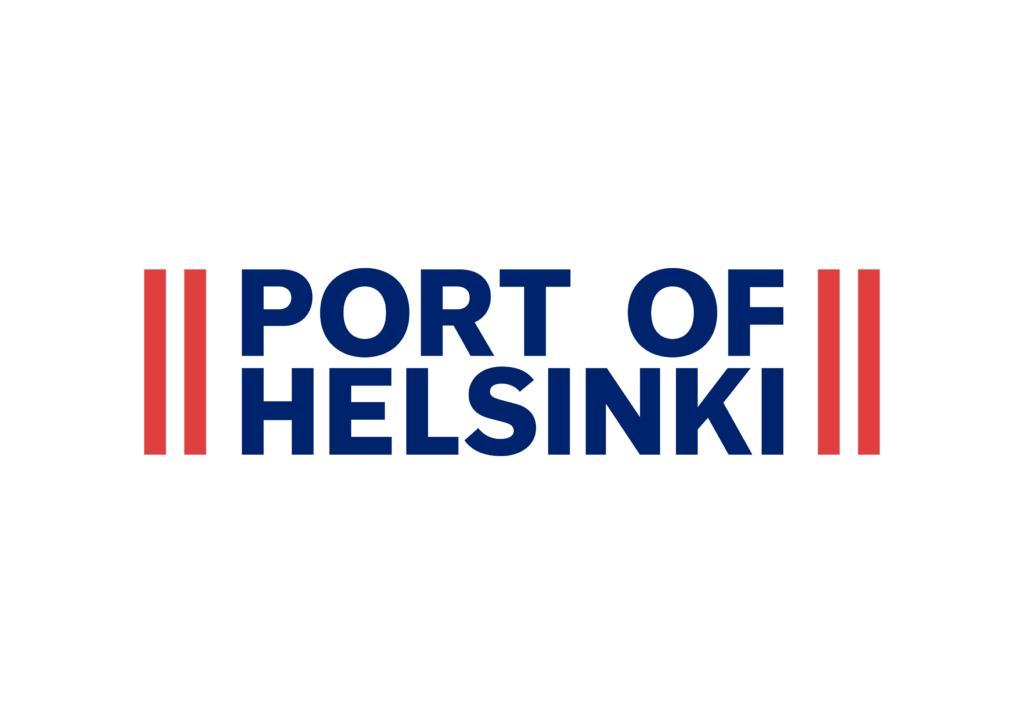
More than 10 million ship passengers travelled through the Port of Helsinki for the first time. The most popular line was that between Helsinki and Tallinn, while the second most popular was the Helsinki–Stockholm line.
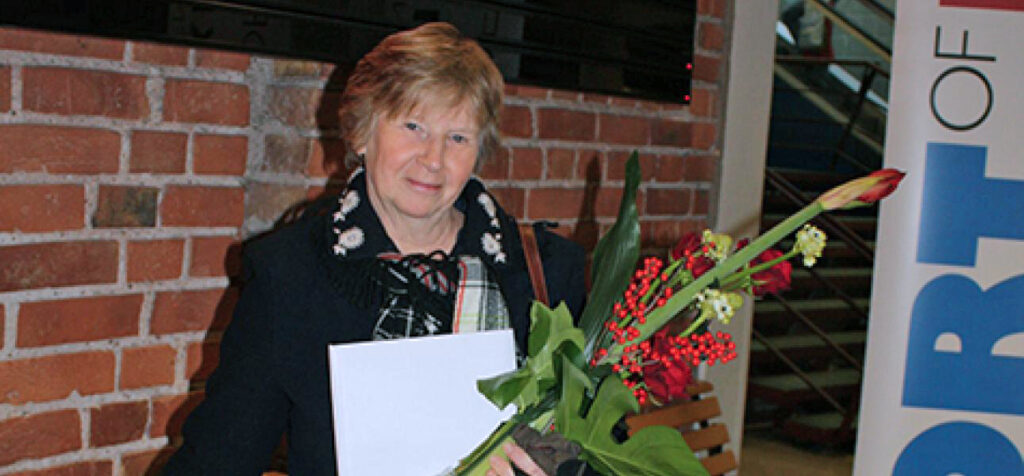
Vuosaari Harbour was opened in 2008. The cargo terminals located near the city centre were closed and their functions were transferred to the new top-of-the-line harbour area of Vuosaari. Helsinki, the capital city and the most important port of Finland, underwent a transformation.
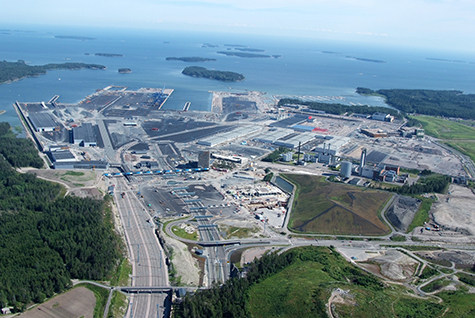
The amount of the Port of Helsinki’s unitised cargo traffic exceeded 10 million tonnes, while its total cargo traffic exceeded 12 million tonnes. The Port was also visited by a record-breaking number of 13,866 vessels, while its international cruise ship traffic exceeded 200 annual vessel visits.
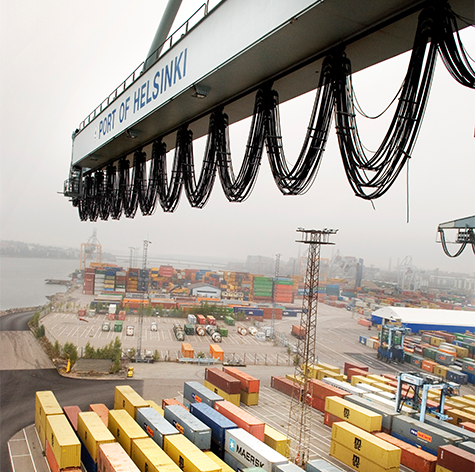
The construction of Vuosaari Harbour began in 2003. The idea of a harbour in Vuosaari already existed when Vuosaari was annexed to Helsinki in 1966. The construction of the new cargo harbour was preceded by rigorous preparations: surveying alternative solutions, discussions, memos and seminars. The harbour did not receive its current location until Helsinki completed its 1992 city plan.
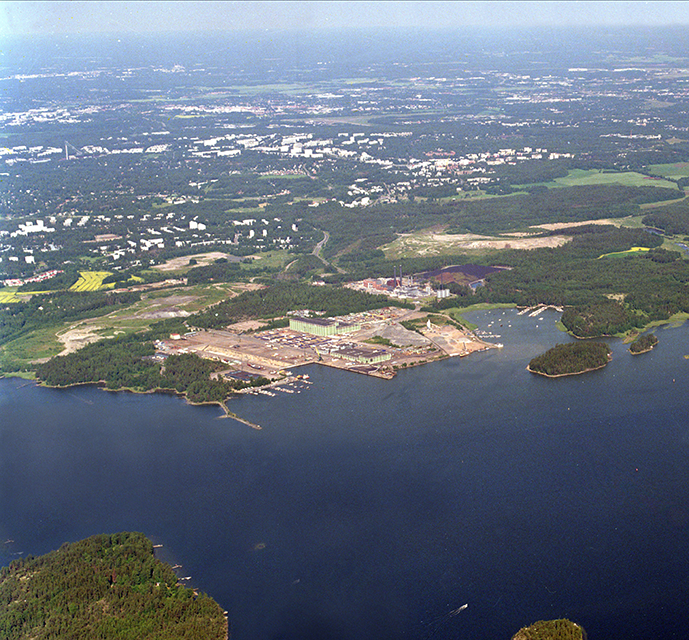
More than 8 million passengers travelled through the Port of Helsinki, and the Port’s foreign cargo traffic exceeded 10 million tonnes.
Finland became a member of the EU and the City of Helsinki Port Authority became the Port of Helsinki, further strengthening its position as an enterprise. West Harbour’s new passenger terminal, West Terminal, was commissioned for Tallinn traffic.
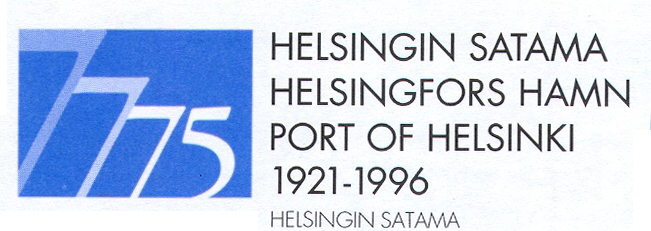
The Port took part in collective cost reduction efforts during the recession. The old warehouses of Katajanokka were put to new use: K12 now served as an impressive hotel, while quay storage K7 was transformed into the Marina Congress Centre. The last ship visited the Herttoniemi oil harbour in the spring, after which the harbour area was made available for housing production. An entire new district was forming in the former Ruoholahti harbour area.
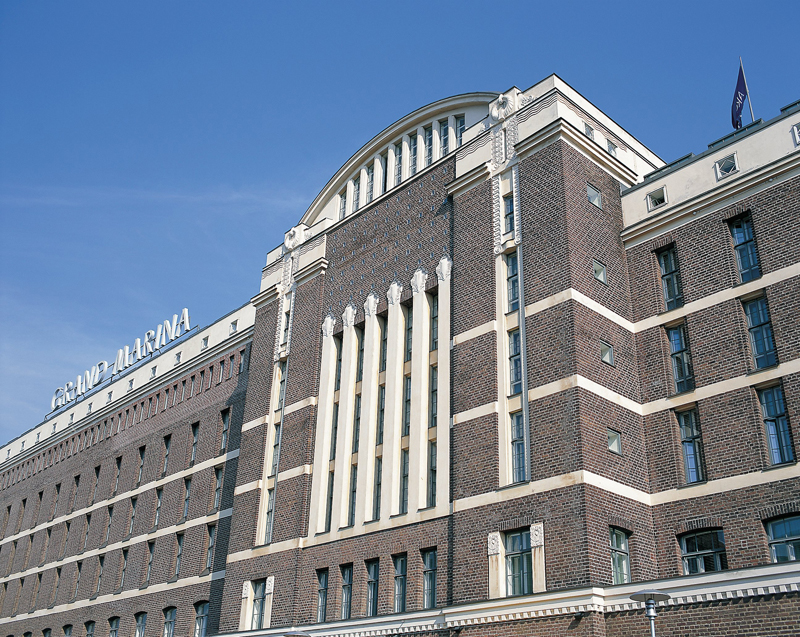
The Port of Helsinki’s number of passengers was steadily increasing. The Port now reached the milestone of three million passengers. Finland was living the wild years of the casino economy. Container traffic and increasing road traffic led to the disappearance of port railways. The last tracks of Katajanokka were dismantled in 1985, and the bridge between the Market Square and Katajanokka disappeared in 1989.
Helsinki hosted the greatest maritime show of all time as the city was once again visited by participants of the Tall Ships Race sailing competition. 99 sailing ships and a couple thousand sailors travelled from Karlskrona to Helsinki and then via Mariehamn to Copenhagen.
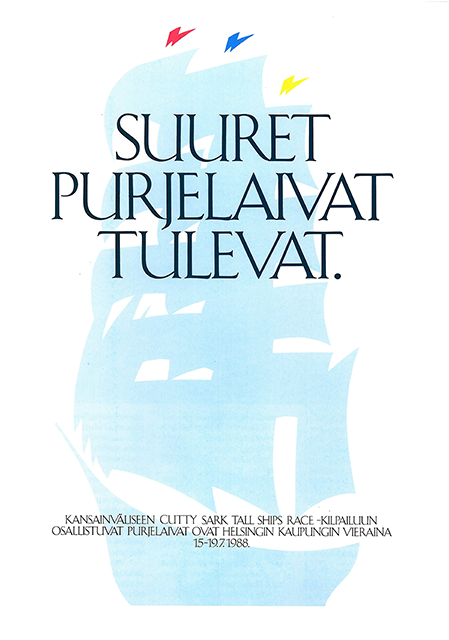
The Port of Helsinki was visited by more than 20 million passengers and had more than 2 million tonnes of exports.
The Port’s foreign cargo traffic exceeded 5 million tonnes, and records were made to be broken. Viking Saga and Viking Song were Viking Line’s new larger-than-before vessels. The following year, Silja Line’s new large vessel Finlandia and its sister Silvia Regina began to operate from South Harbour.
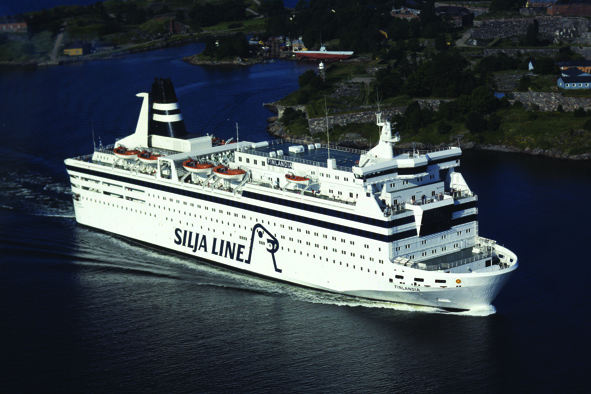
The Katajanokka passenger terminal was completed and Finnjet began proper operations in May. The ship took 1,800 passengers and cars from Helsinki to Travemünde in 23 hours. A cargo terminal was opened at West Harbour in October, reinforcing Helsinki’s position as Finland’s leading cargo port. Another cargo terminal was opened in Sörnäinen in 1982.
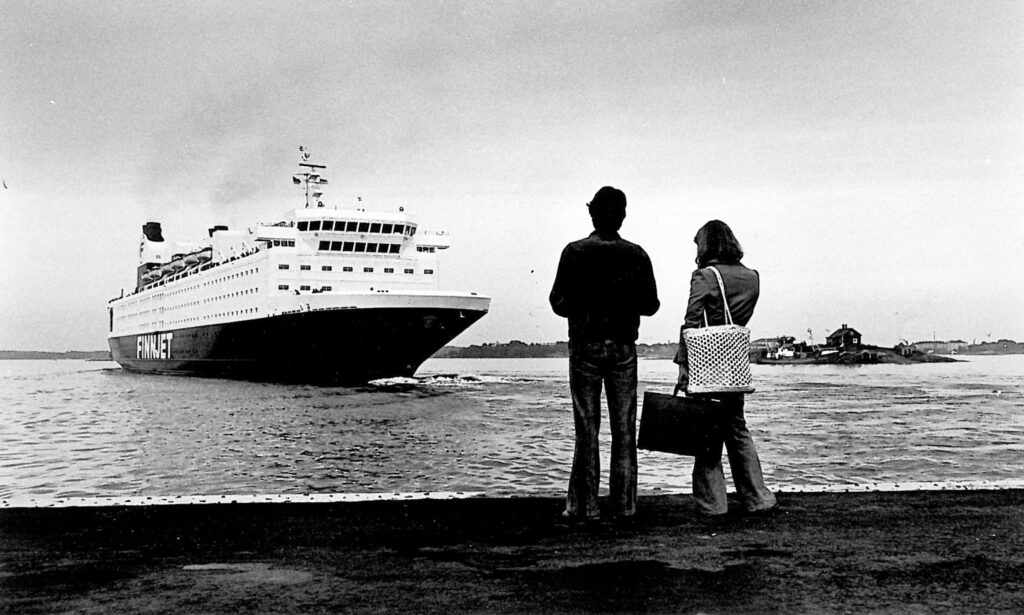
For the first time, more than a million passengers travelled through the Port of Helsinki. South Harbour served as a passenger traffic hub, and plans were made for a new passenger terminal in Katajanokka. Silja Line’s new ferries Bore Star, Svea Corona and Wellamo began operating on the Stockholm route.
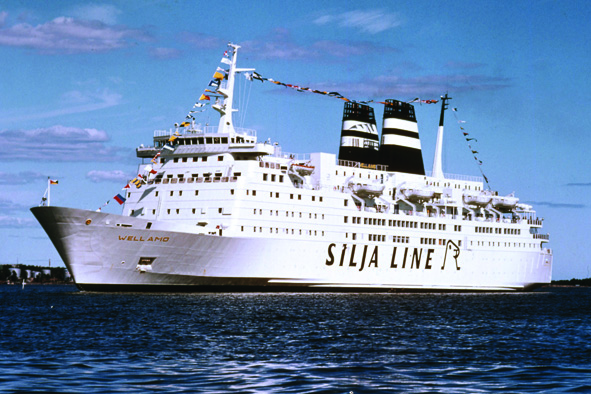
The red ships Viking 5 and Viking 6 began operating on the Stockholm route from the back of the Katajanokka basin, by the Presidential Palace.
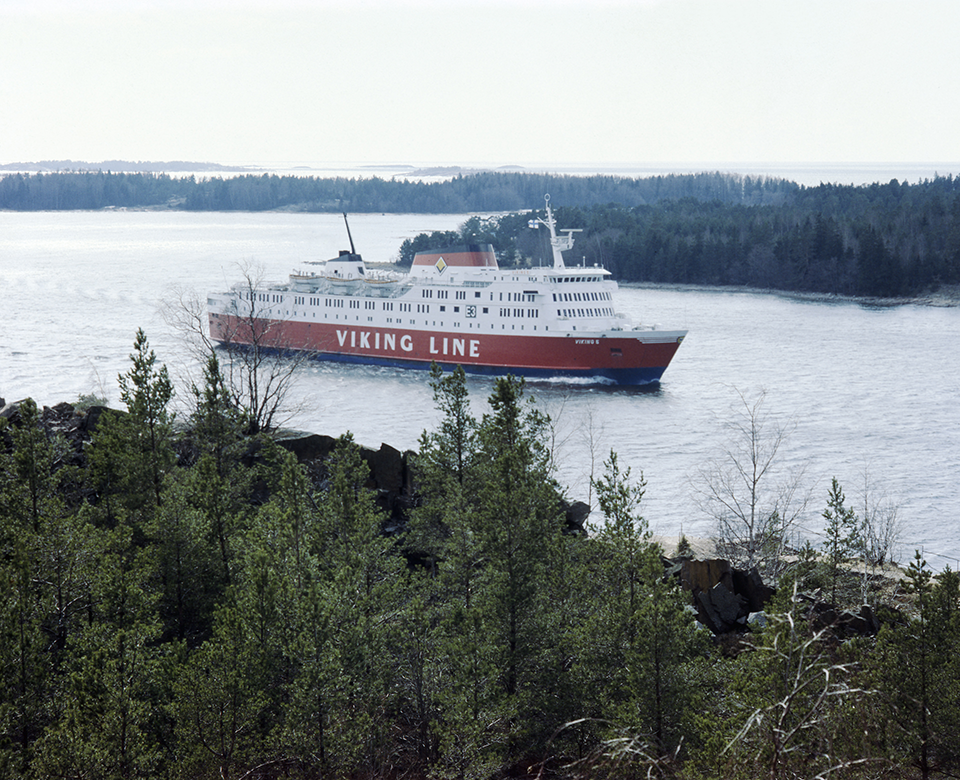
Passenger traffic was centred to South Harbour and cargo ferry traffic to Sörnäinen. A jetty was built on the South Harbour passenger quay to serve as a ramp for car ferries to and from Stockholm, and the commissioning of ice-strengthened passenger ferries marked the beginning of year-round passenger traffic. Foreign cargo traffic exceeded 4 million tonnes.
West Harbour was developed in the 1970s. Barrels were replaced with containers, which called for large cranes. The first container crane was procured and a free zone was completed in the Bunkkeri warehouse.
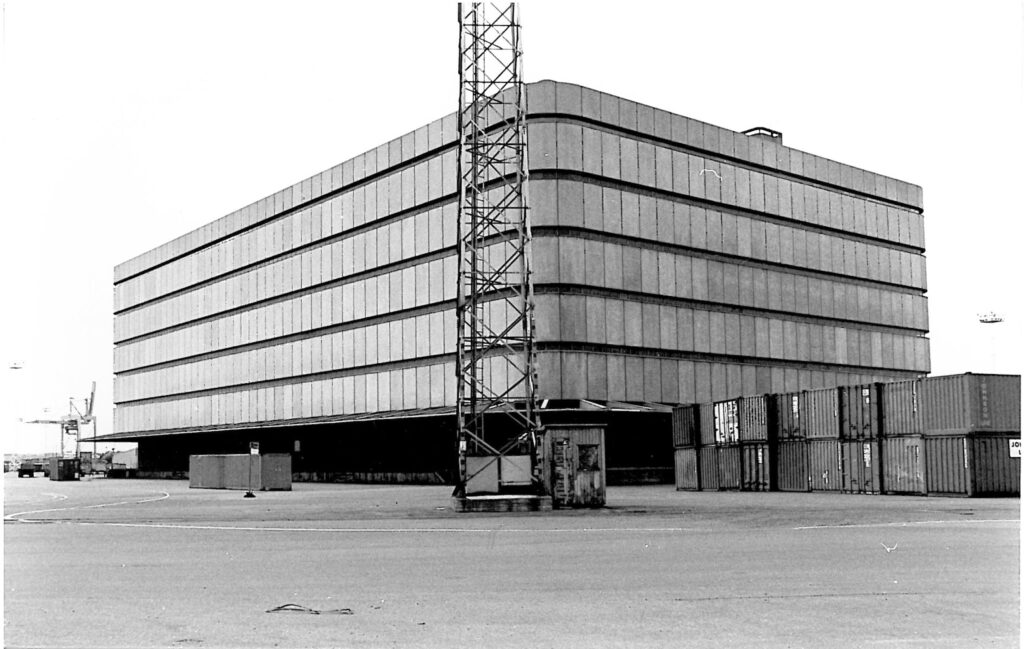
Car ferry traffic became established in the 1960s. The first ferry was MS Hansa Express, which began operating to the Sörnäinen harbour in 1963. M/s Finlandia began operating in 1967, carrying 320 cars. The ferry had a sauna department, a cinema and a night club. This started a race between passenger ferries.
Bulk cargo traffic began as well. It was realised that a good method was to pack the load in advance on shore, so that when the ferry arrived at the harbour, it was unloaded and then loaded with the pre-packed bulk cargo units. Ships’ time at dock shortened and the profitability of maritime transport surged.
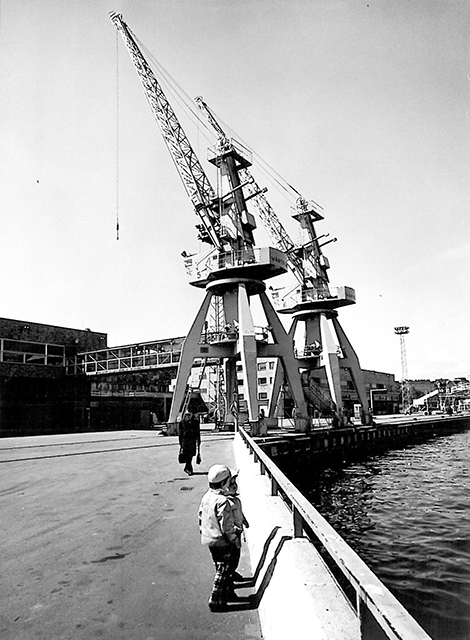
Sompasaari Island in Kruunuvuorenselkä was connected to the mainland with filling soil in the 1950s. Construction began on the island in 1961, merging it with the Sörnäinen harbour. Because of this, the Sörnäinen harbour as a whole has also been called Sompasaari. The Sörnäinen harbour grew into the city’s most important cargo traffic ferry harbour.
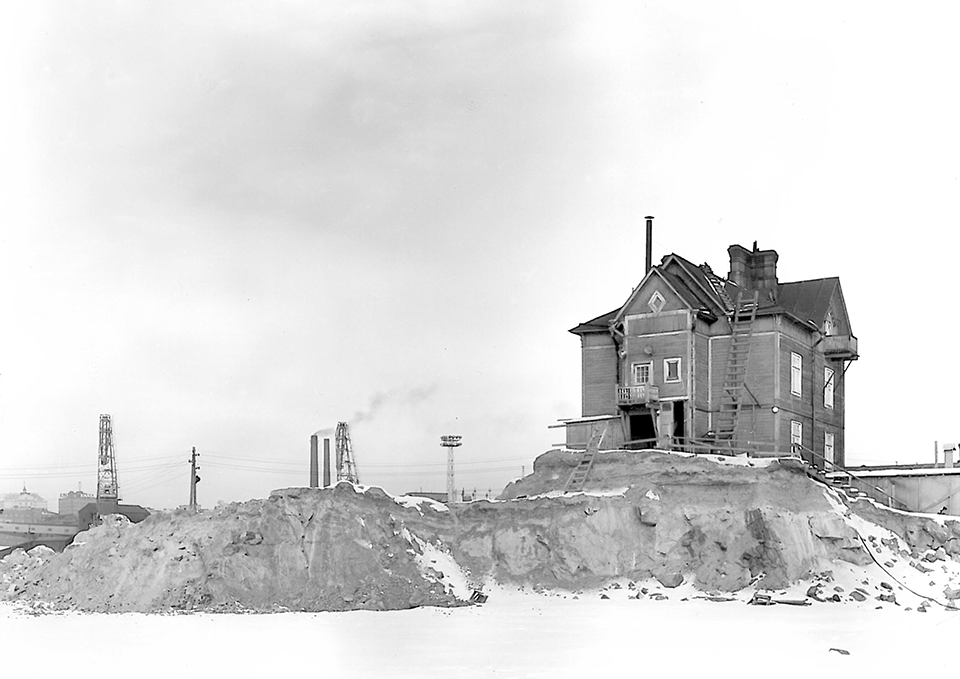
In the 1960s, the Port of Helsinki’s foreign cargo traffic volume exceeded 3 million tonnes, while its total cargo traffic volume exceeded 4 million tonnes.
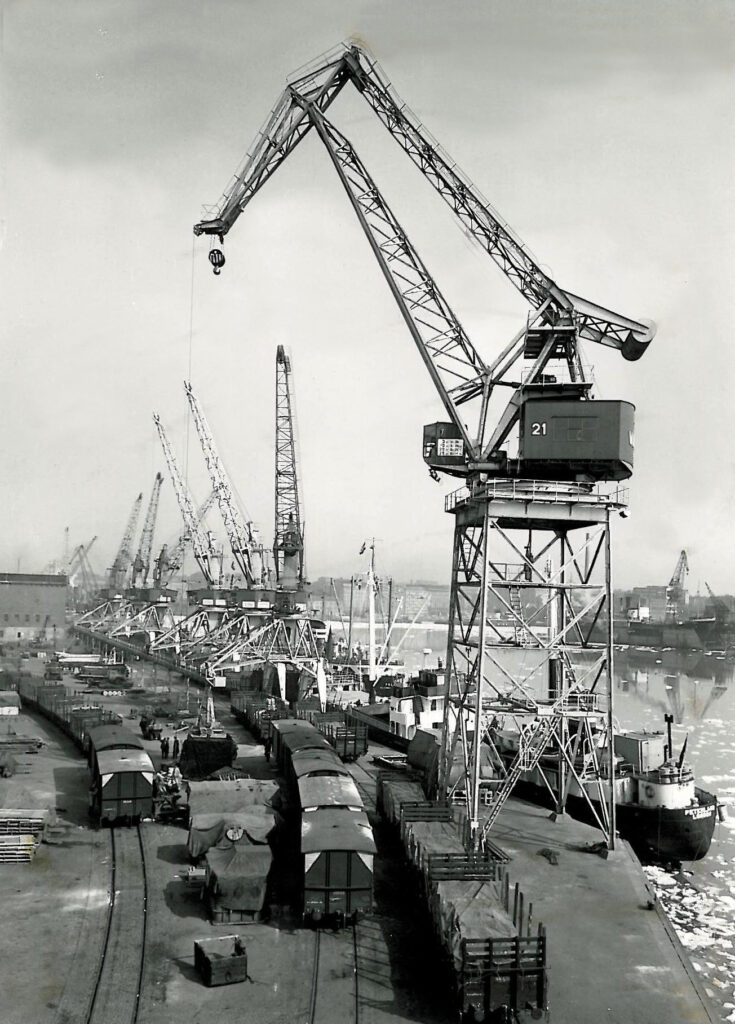
Finnish people’s Olympic dreams were crushed when the 1940 Helsinki Olympics had to be cancelled due to the prevalent international situation. By contrast, 1952 was a milestone year for Helsinki and Finland, as the Olympics could finally be held in our capital city. The Olympia Quay was built at South Harbour, and its passenger pavilion was put into service by the start of the games.
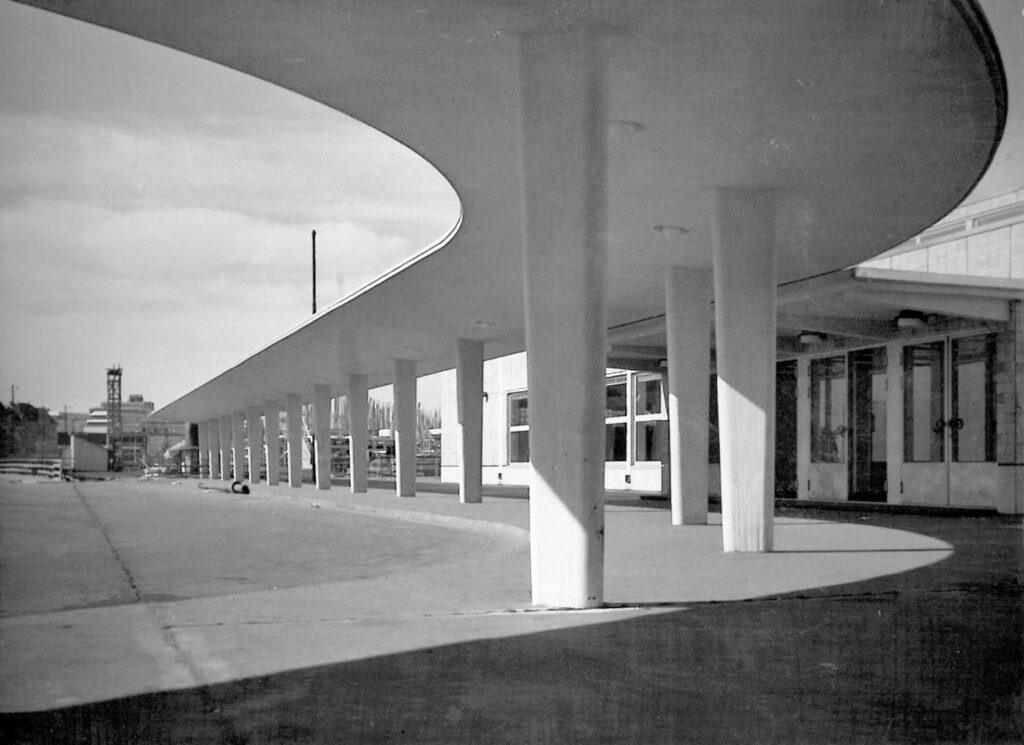
The Winter War was fought in 1939–1940. During the winter, the Port was closed for five and a half months. Operations were again suspended during the Continuation War of 1941–1944. The Port received its share of air raids, but there was relatively little material damage. The brand new icebreaker S/S Turso had to be delivered to the Soviet Union as part of reparations. The vessel returned to its home port in 2004, after 66 years. You can learn about the history of the now restored vessel at www.turso.fi.
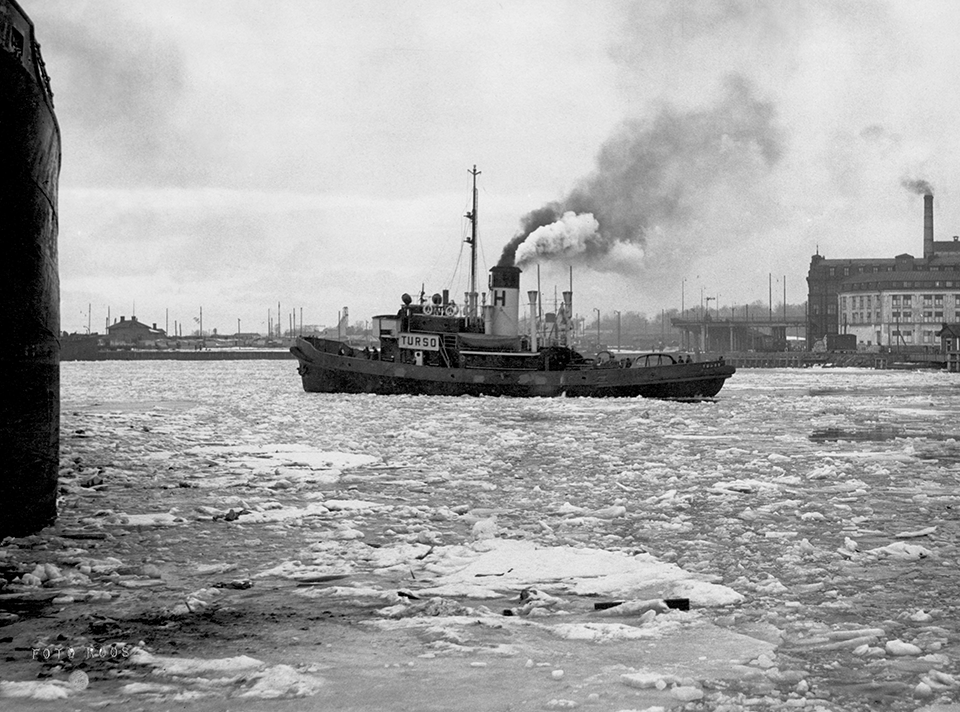
The Port expanded to Munkkisaari in the mid-1930s. In 1938, the oil harbour was transferred from Sörnäinen to Herttoniemi for fire safety reasons, where it remained in operation until 1992. A new oil harbour was built in Laajasalo in the 1950s.
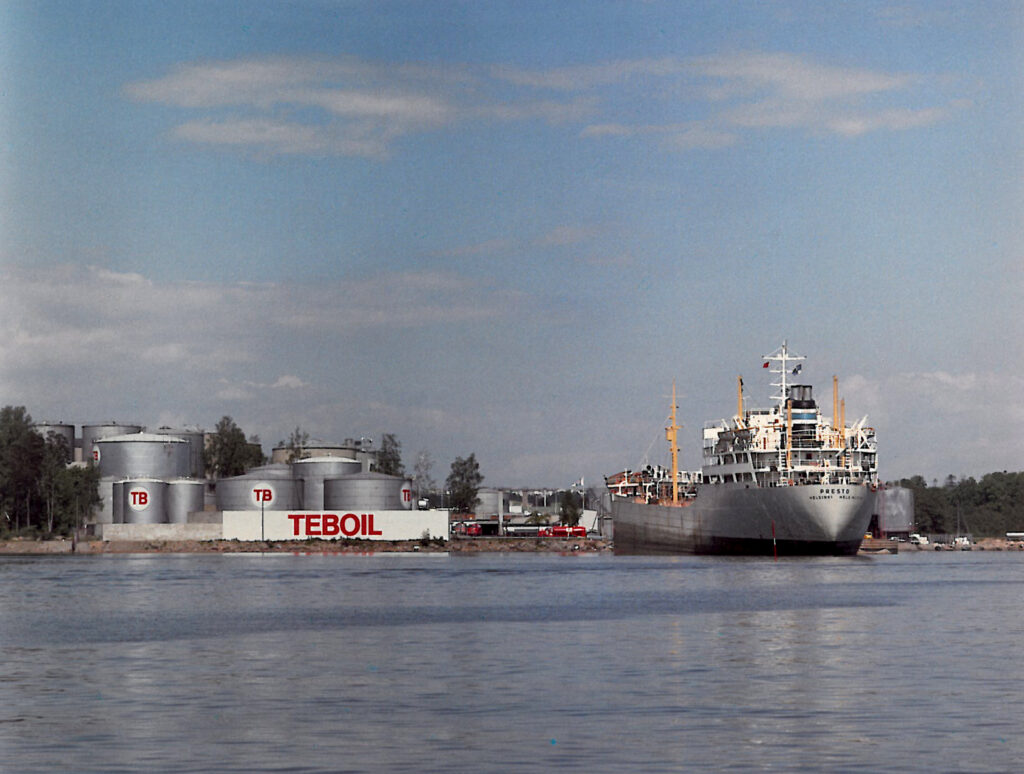
Foreign cargo traffic exceeded 1 million tonnes in 1927. Another milestone was reached the following year, as the port was visited by more than 10,000 vessels.
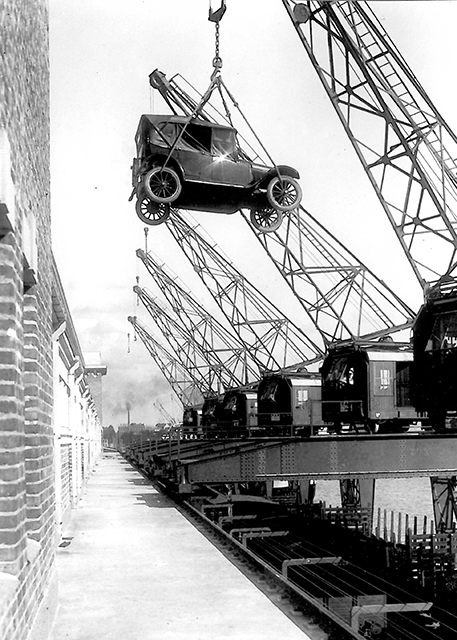
People were fed up with prohibition (1919–1932), and 1924 was the peak year of bootlegging. Spirit ships and bootleggers’ sea routes mainly from Estonia, but also from Poland and Germany, were thriving. The sea and islands were used to hide the spirit.
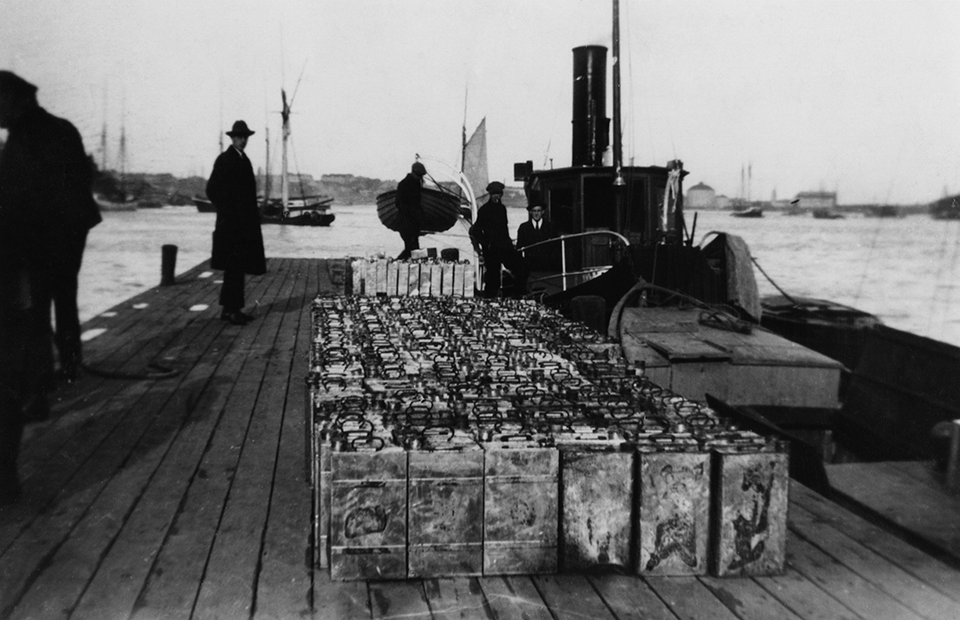
The Port was expanded: Hietasaari and Jätkäsaari were combined into a harbour area that featured depositories, warehouses and cranes. A coal harbour was built on Saukko Island in 1925 and eventually closed in 1977. West Harbour began to take form.
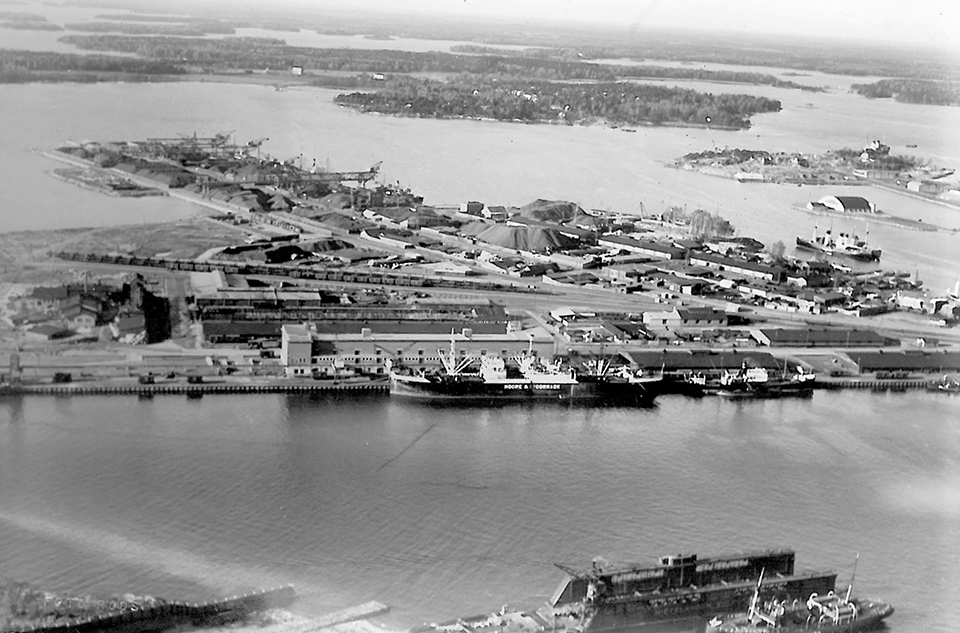
Finland’s independence in 1917 gave the poor country a boost in the economic sector, but it also broke Finland’s contact and trade with Russia. The Port’s significance increased, and Satamahallitus (Port Administration) was established in 1921.
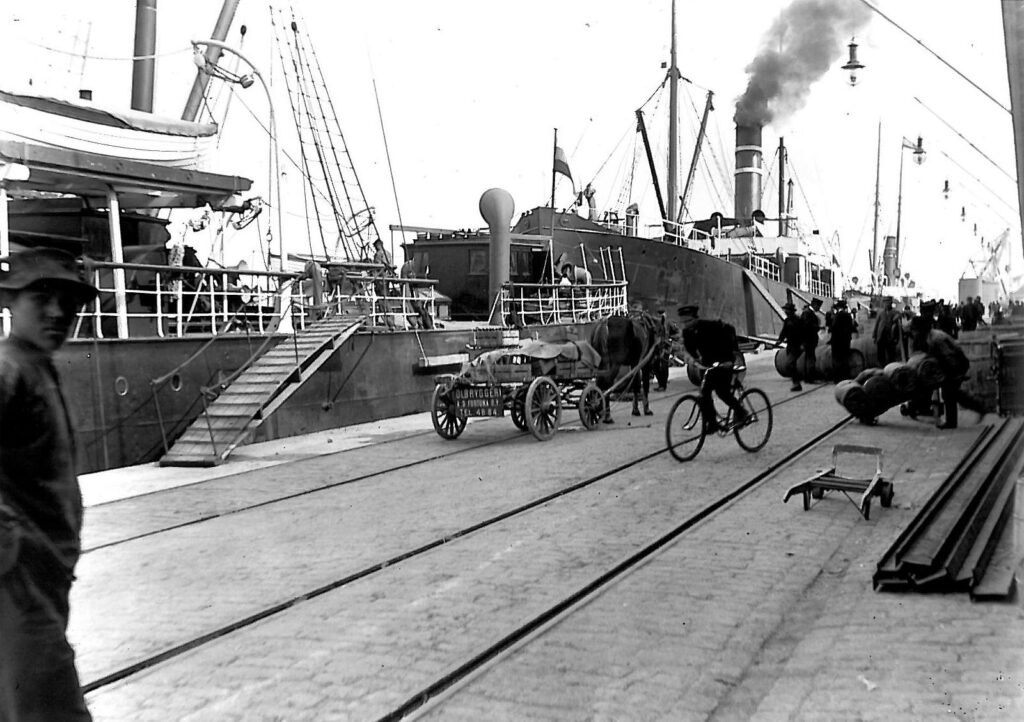
Finland’s first proper icebreaker was completed in 1890. In 1910, Hietalahti Shipyard built the country’s first harbour icebreaker, a vessel named Mercator. Icebreaking was very significant, as seafaring had previously always ceased when the water froze. This caused Finland’s foreign trade to the West and Russia to cease as well.
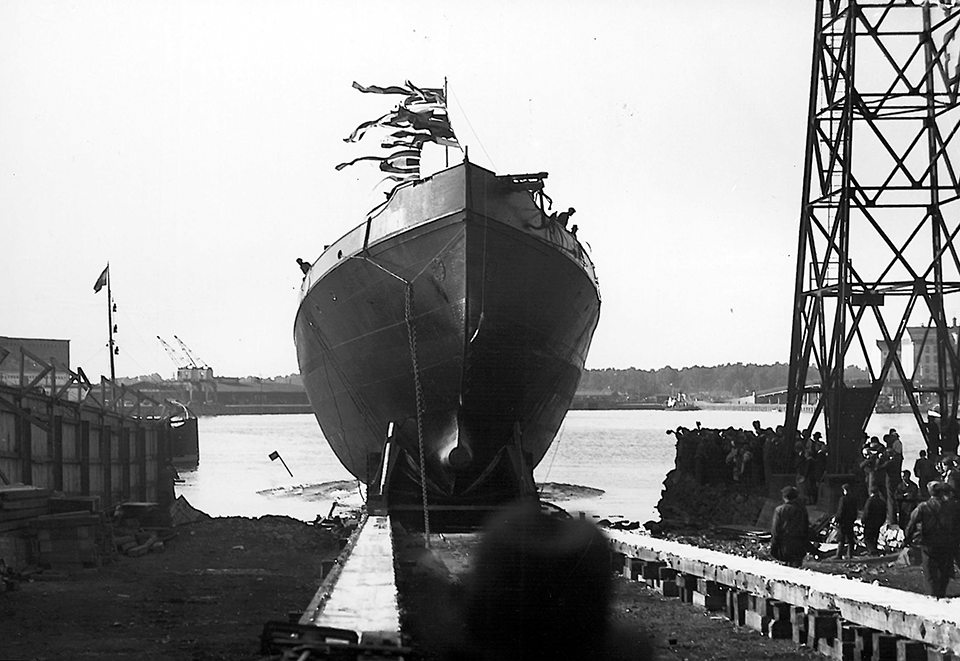
In 1894, South Harbour received a railway and its first crane. The following year, the harbour track was extended all the way to Katajanokka. The mechanisation of harbour work began.
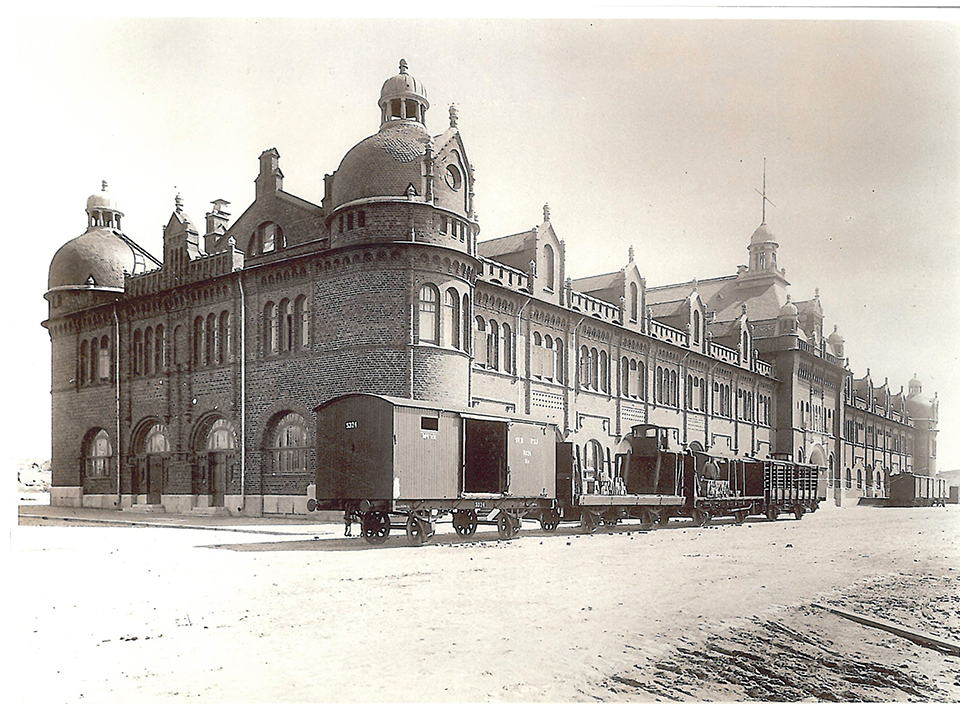
The Sörnäinen harbour became an oil harbour as well. In a few years, the harbour grew into an essential partner for the country’s national energy supply.
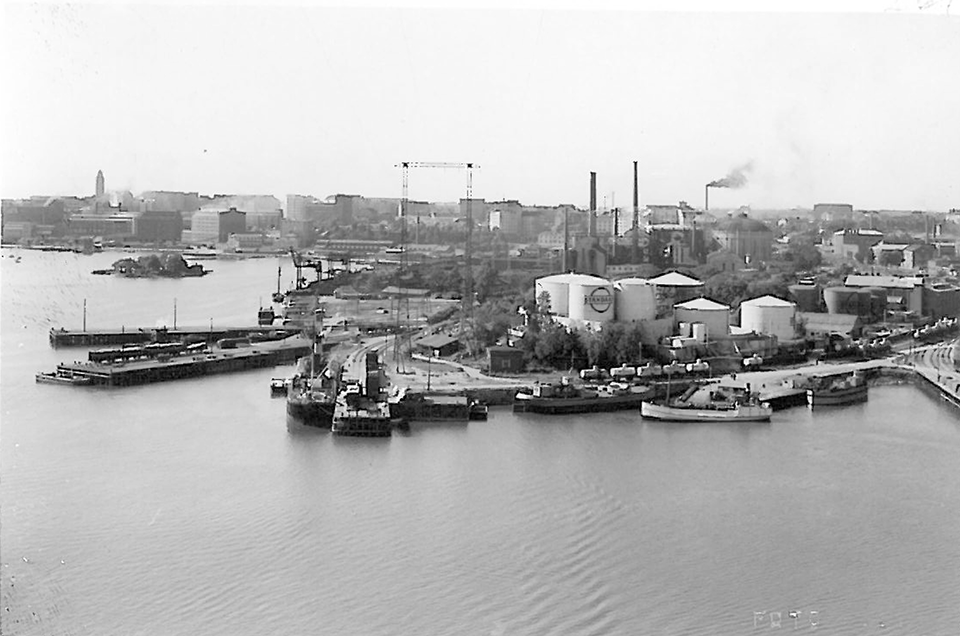
Helsinki built a new harbour in Sörnäinen. Sörnäinen harbour served as a timber loading harbour, and a railway was built in the area, opening new possibilities for transport operations. A new era of timber began: logs were transported from Päijänne directly to Sörnäinen by train. Finland’s first railway was built between Helsinki and Hämeenlinna the year before, and in 1870, a track connection was built via Lahti to St. Petersburg and Vyborg.
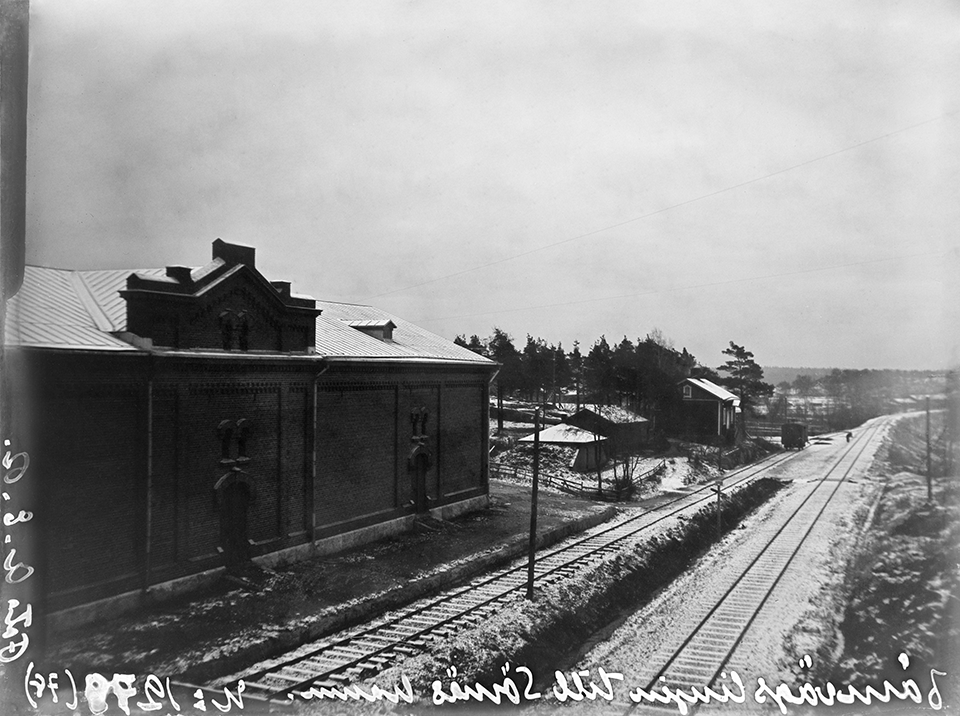
The first harbour master was appointed in 1839. This marked the birth of the port organisation. Helsinki’s first port regulations, called ‘the harbour master’s statute,’ were issued in 1845.
A new era was kicked off by the paddle steamer Storfursten, which operated between Turku, Helsinki and St. Petersburg. Passenger traffic was active during the so-called spa era from the late 1830s to the early 1850s. Visitors came from St. Petersburg and Tallinn in particular.
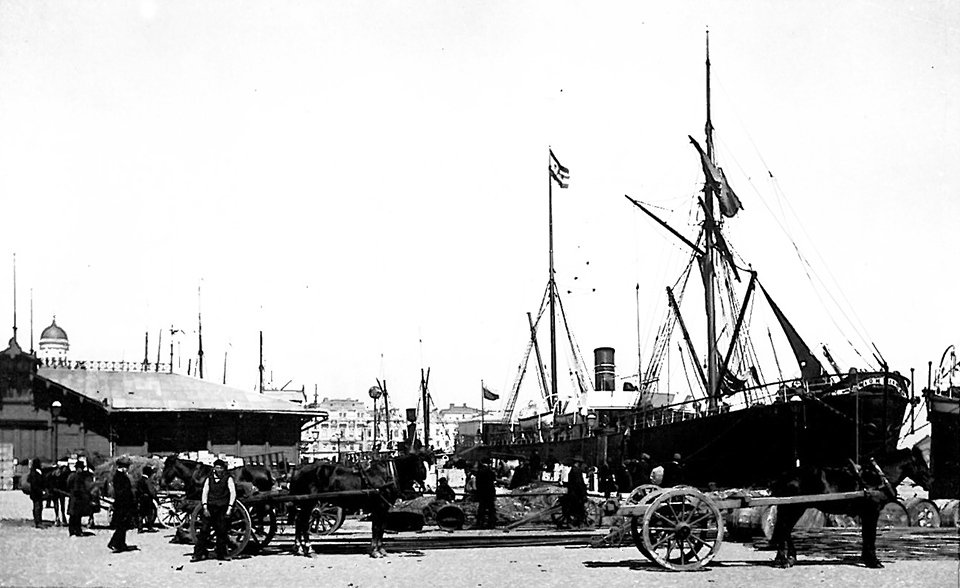
Helsinki’s proper port was built in the current South Harbour area. The shallow Kaupunginlahti bay was dredged and quays, warehouses and harbour basins were built on the western shore. In turn, North Harbour became an important log harbour over the decades, and its new quay came to be called Halkolaituri (‘Log Quay’). Sailing ships began arriving at the harbour in the 1820s.
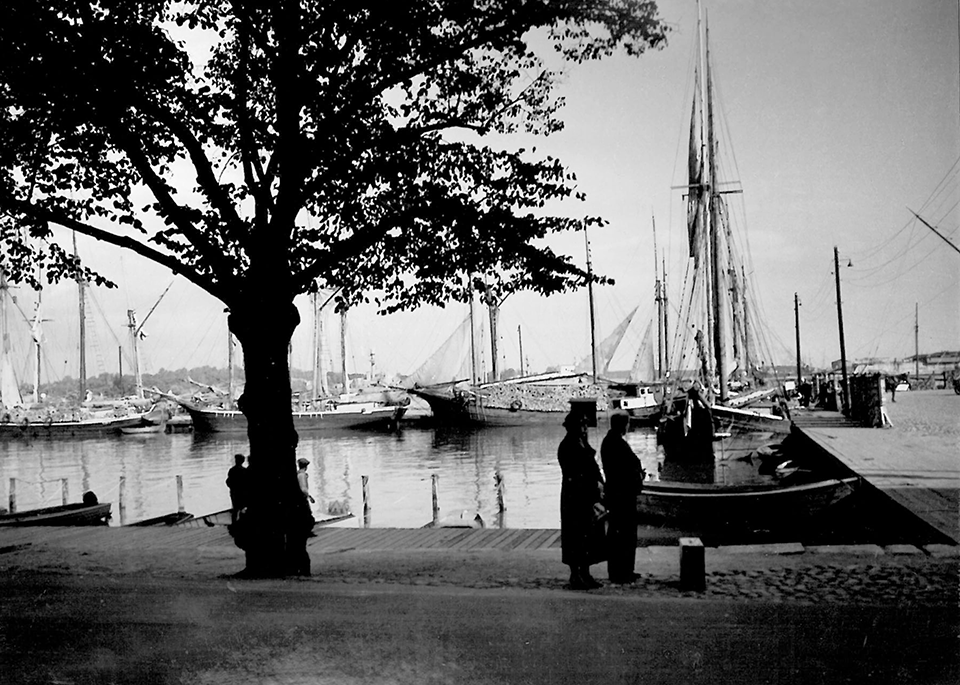
As per the order of Emperor Alexander I of Russia, Helsinki became the capital city of the autonomous Grand Duchy of Finland. Imperial gold roubles set development into motion: the aim was to develop Helsinki and its port into the centre of Finland’s trade and prosperity.
The construction of Viapori, i.e. the current Suomenlinna sea fortress, began. The fortress was very significant to the growth of local trade and transport operations for decades. Finland’s standard of living increased and the Port grew.
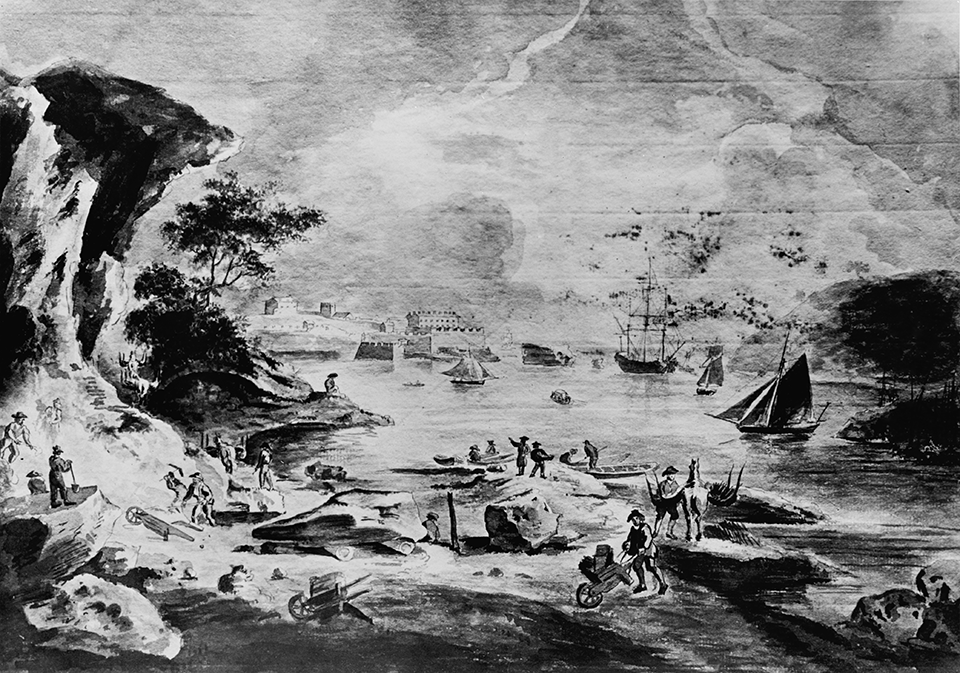
The Helsinki Baltic Herring Fair was born in 1743 when Helsinki received two new free market fairs as per a royal order, one of which was held on the day of the Conversion of Saint Paul and the other on Michaelmas Day, 29 September. In 1819, the date of the Michaelmas Day market fair was moved to the beginning of October, where it has remained to this day as the date of the Helsinki Baltic Herring Fair.
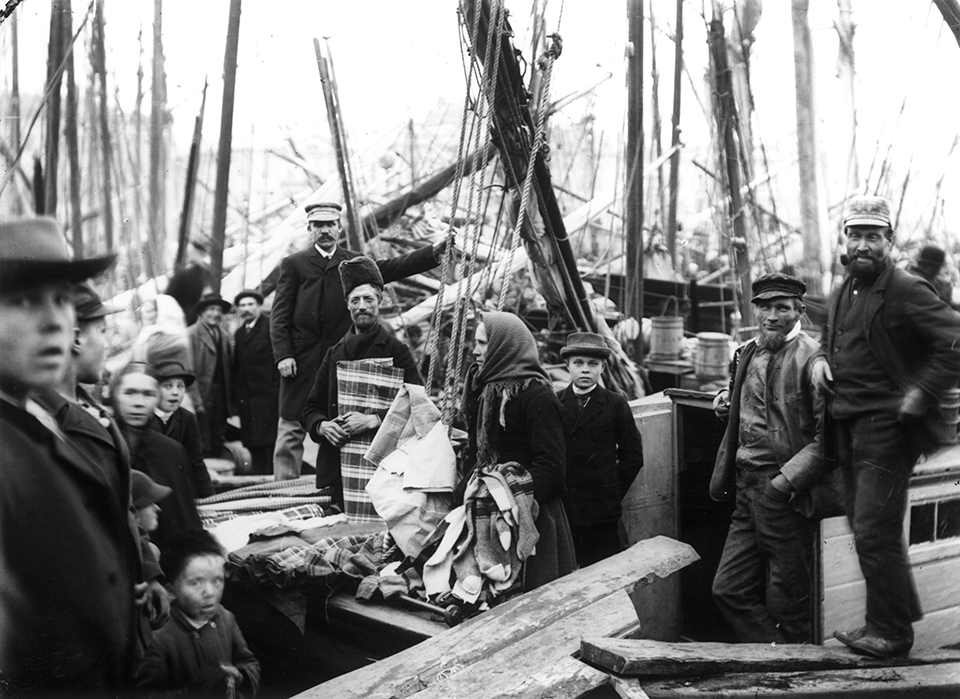
Foreign traffic increased in the 18th century, albeit very slowly at times. The first customs and pack house was completed in 1765, and the building remains to this day at the address Mariankatu 3. ‘Pack house’ referred to a facility where imported goods were unpacked, inspected and weighted to determine appropriate customs and other fees.
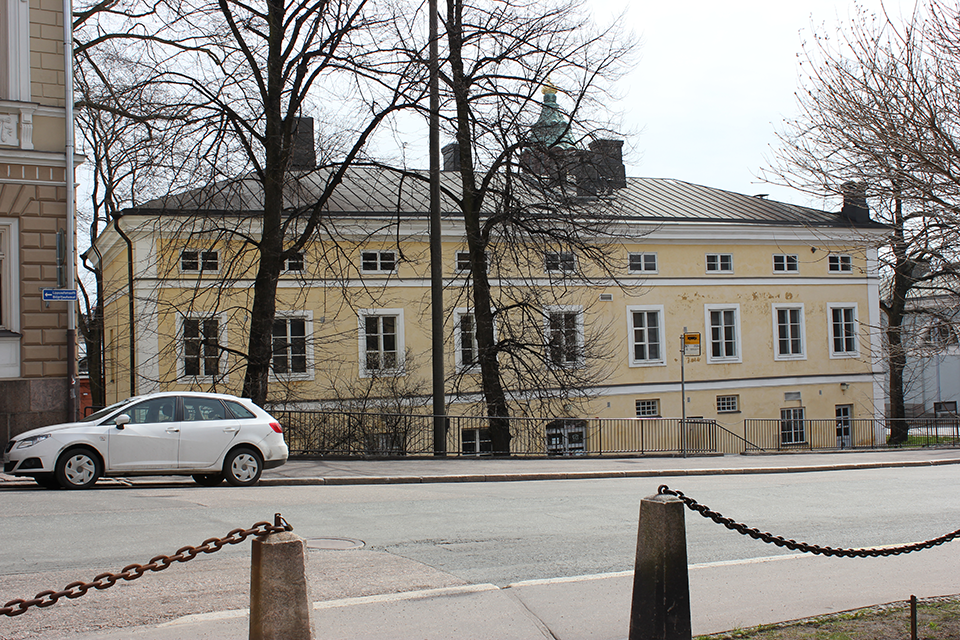
Helsinki and its port were scraping by while Tallinn and traditional sailing thrived. The city and its port were transferred to a new location in the current Kruununhaka area. The Laivasilta pier of North Harbour was the birthplace of the port. The port grew into a city.
Gustav Vasa founded the port and the city of Helsinki in the Vantaa River delta on 12 June 1550. The King wanted to compete for transport operations on the Baltic Sea. The objective was to trade with Russia and Holland, supplanting Tallinn as the hub of Russian trade.
